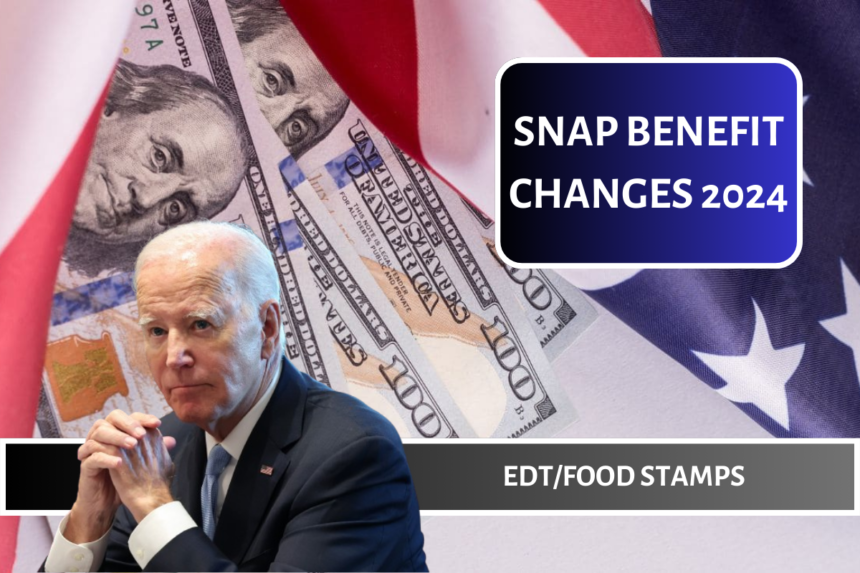In 2024, the United States wants to make big changes to the Supplemental Nutrition Assistance Program (SNAP). The farm bill, a law that affects farming and SNAP payments, is what will cause the changes.
The changes could affect the people who benefit from the program, so it’s important to know what they are. We will talk about the changes that are likely to happen to SNAP and how they will affect the people who depend on it for daily food.
What is SNAP?
If you or your family are low on money, the Supplemental Nutrition Assistance Program (SNAP) can help you buy healthy food. EBT cards are used in the program, which is run by the Food and Nutrition Service of the U.S. Department of Agriculture (USDA). It is important to have SNAP because it helps people get healthy food that they can buy. Plus, they have more money to spend on other health-related costs.
Farm Bill Delays and Minimum Monthly Benefit Increase
The farm bill is currently being held up, which happens a lot because of how hard the talks are. The bill covers a lot of different topics, from food stamps to farm subsidies.
One idea for the new farm bill is to raise the minimum monthly payment for people who get SNAP. This change is meant to help people and families with low incomes buy healthy food by giving them more money available to spend.
Gradual Increase in Work Requirements
As a result of the new law, able-bodied adults without children (ABAWDs) who get SNAP benefits will likely have to work more and more. Adding 54 years old to the age range by October 2024. Before, people between the ages of 18 and 50 had to meet certain work requirements in order to get SNAP payments.
Exemptions
It’s important to remember that people under a certain age don’t have to meet these work standards. People with physical or mental disabilities, pregnant women, soldiers, the homeless, and people aged 24 or younger who were in foster care when they were 18 are not required to work by the ABAWD.
Income Eligibility
Applicants must not make more than 130% of the government poverty level each month in order to be eligible for the program. Because the cost of living is different in Alaska, Hawaii, Guam, and the Virgin Islands, among other places in the United States, this standard changes depending on the size of the family and where it is located.
Also See:- $300 Monthly IRS Child Tax Credit Returning?
SNAP Benefit Allotments for 2024
The USDA has stated that the maximum Supplemental Nutrition Assistance Program (SNAP) benefits will go up in 48 states, the District of Columbia, Alaska, Guam, and the U.S. Virgin Islands in 2024 because of changes in the cost of living. Hawaii, on the other hand, will have fewer places where a family of four can live.
Between October 2023 and September 2024, the most SNAP benefits a family can get will depend on its size and location. The following list shows the allotments for families with one to eight people. For the 48 states and D.C., the base benefit of $23 will stay the same.
| Household Size | 48 States, D.C., Guam, Virgin Islands | Alaska | Hawaii |
|---|---|---|---|
| 1 | $1,580 | $1,973 | $1,817 |
| 2 | $2,137 | $2,670 | $2,457 |
| 3 | $2,694 | $3,366 | $3,098 |
| 4 | $3,250 | $4,063 | $3,738 |
| 5 | $3,807 | $4,760 | $4,378 |
| 6 | $4,364 | $5,456 | $5,018 |
| 7 | $4,921 | $6,153 | $5,659 |
| 8 | $5,478 | $6,849 | $6,299 |
| Each Additional Member | +$557 | +$697 | +$64 |
